-
New material cleans water of radioactive contamination
NC State researchers develops material to remove radioactive contaminants from drinking water; the material is a combination of forest byproducts and crustacean shells; the new material not only absorbs water, but can actually extract contaminates, such as radioactive iodide, from the water itself; this material, which forms a solid foam, has applications beyond radioactive materials
-
-
NRC inspects Nebraska reactor radiation exposure
On 3 April, workers at the Cooper Nuclear Station, located near Brownville, Nebraska removed a long tube contaminated with highly radioactive material through the bottom of the reactor vessel, rather than through the top as is usually done, triggering radiation alarms; the NRC is investigating
-
-
Sector Report for Monday, 11 April 2011: Detection
This report contains the following stories.
Plus 1 additional story.
-
-
DHS: U.S. unprepared for nuclear disaster
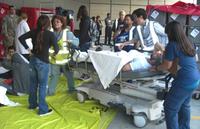
Confidential DHS report says the United States is ill-prepared for a nuclear disaster — either an accident or a terrorist attack; just one example: if a major nuclear bomb were to hit Washington, D.C., there would be a need for about 61,000 beds in intensive care units; there are, however, only 118,000 intensive care beds in the entire United States and, on any given day, only 9,400 are free.
-
-
Army seeks long distance explosive detection scanners for people
The U.S. Army is seeking to rapidly deploy long distance chemical detection devices that are capable of detecting explosives hidden on people; ideally, the devices will be able to sense the presence of explosives and chemicals on people standing, walking, or running from as far away as 100 yards; the Army wants to be able to field these capabilities within a year, so it is only considering mature technologies that are ready to be implemented; the request for proposals will close on 6 May
-
-
Russia to employ hi-tech bomb-sniffing dog
In response to a series of terrorist attacks, Russia’s president Dmitry Medvedev has called on Russian military and security services to train more dogs as bomb sniffers; the dogs are trained not only in identifying explosives, but are also trained in carrying walkie-talkies so they can be given instructions from a distance, and to carry portable video cameras for in-building surveillance
-
-
Spate of dry-ice bombs explosions in Long Beach, Calif.
A Long Beach officer is injured after an investigation of a dry-ice bomb left in an alley; a dry ice bomb is a homemade device that uses water, a bottle and dry ice, or frozen carbon dioxide; it can take anywhere from thirty seconds to an hour for a dry-ice bomb to rupture, depending on temperatures outside of the bottle
-
-
Concerns about Illinois nuclear safety trigger inspections
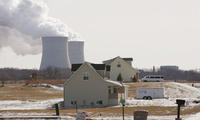
The U.S. Nuclear Regulatory Commission (NRC) is currently performing Special Inspections at the Byron and Braidwood Nuclear plants in Illinois after issues were identified in February and March of 2011; at issue is the ability of pumps to cool the reactor in case of a reactor trip or any reason the system for heat removal became unavailable at both Byron and Braidwood stations which are similar in design
-
-
Easing contamination fears in Japan's food industry

With much of Japan’s manufacturing sector, land, and critical infrastructure badly damaged from the March 11 earthquake and tsunami, dairy and rice manufacturers have struggled to produce enough to feed the nation; Japan produces all of its own milk, rice, and yogurt products, but domestic plants are operating far below full capacity; shortages may persist into the summer; as production ramps up, fears of contamination from radiation leaked from the Fukushima Daiichi nuclear power plant may dampen consumption; one analyst suggests that Japan institute a food tracking program that will allow consumers to track the production of food every step of the way to help ease fears
-
-
Battery-less chemical detector developed
Conventional chemical detectors require an external power source, but Lawrence Livermore researchers have developed a nanosensor that relies on semiconductor nanowires rather than traditional batteries; the device overcomes the power requirement of traditional sensors and is simple, highly sensitive, and can detect various molecules quickly; its development could be the first step in making an easily deployable chemical sensor for the battlefield
-
-
New device uses sniffer bees to detect explosives
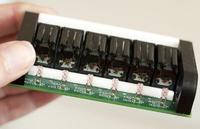
The unassuming honeybees have a hidden talent — an even keener sense of smell than anyone first expected — which could make them one of the U.K.’s most ruthless and worst-feared weapons against terrorism; researchers developed a portable handheld sensor that holds thirty-six trained bees gently restrained in six cassettes inside the device; each is taught to recognize a particular odor and associate that smell with a food reward; the researchers have already trained their honeybees to detect a wide variety of explosive compounds and mixtures, including Semtex, C4, PE4, TNT, DMNB, gunpowder, and hydrogen peroxide
-
-
Ultra-sensitive sensor technology detects explosives, cancer
Princeton researchers have invented an extremely sensitive sensor that opens up new ways to detect a wide range of substances, from tell-tale signs of cancer to hidden explosives; the sensor, which is the most sensitive of its kind to date, relies on a completely new architecture and fabrication technique developed by the Princeton researchers; the device boosts faint signals generated by the scattering of laser light from a material placed on it, allowing the identification of various substances based on the color of light they reflect; the sample could be as small as a single molecule
-
-
OSU chemist developing solution to nerve agent exposure
Scientists are working to develop a new drug that will regenerate a critical enzyme in the human body that “ages” after a person is exposed to deadly chemical warfare agents; the drug will counter the effects of Tabun, VX, VR, Sarin, Soman, Cyclosarin, and Paraoxon, all of which take on a similar molecular structure upon aging
-
-
IAEA: after Japan, no more nuclear "business as usual"
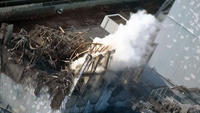
The world cannot take a “business as usual” approach to nuclear power in the wake of the disaster in Japan, UN atomic watchdog chief Yukiya Amano said; “Thinking retrospectively, the measures taken by the operators as a safety measure (were) not sufficient to prevent this accident,” Amano said; he added that the crisis in Japan caused by the 11 March earthquake and tsunami “has enormous implications for nuclear power and confronts all of us with a major challenge”
-
-
Subterranean salt beds to keep U.S. nuclear waste
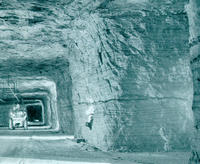
Beds of salt up to one kilometer thick lie within one or two kilometers of the surface across much of the United States; they were deposited hundreds of millions of years ago by evaporating seas; a new study suggests that since President Obama killed the only national nuclear waste burial program — the Yucca mountain site — the United States should look again at the pre-Yucca plan to bury nuclear waste in subterranean salt beds
-
- All
- Regional
- Water
- Biometrics
- Borders/Immig
- Business
- Cybersecurity
- Detection
- Disasters
- Government
- Infrastructure
- International
- Public health
- Public Safety
- Communication interoperabillity
- Emergency services
- Emergency medical services
- Fire
- First response
- IEDs
- Law Enforcement
- Law Enforcement Technology
- Military technology
- Nonlethal weapons
- Nuclear weapons
- Personal protection equipment
- Police
- Notification /alert systems
- Situational awareness
- Weapons systems
- Sci-Tech
- Sector Reports
- Surveillance
- Transportation
Advertising & Marketing: advertise@newswirepubs.com
Editorial: editor@newswirepubs.com
General: info@newswirepubs.com
2010-2011 © News Wire Publications, LLC News Wire Publications, LLC
220 Old Country Road | Suite 200 | Mineola | New York | 11501
Permissions and Policies
Editorial: editor@newswirepubs.com
General: info@newswirepubs.com
2010-2011 © News Wire Publications, LLC News Wire Publications, LLC
220 Old Country Road | Suite 200 | Mineola | New York | 11501
Permissions and Policies
